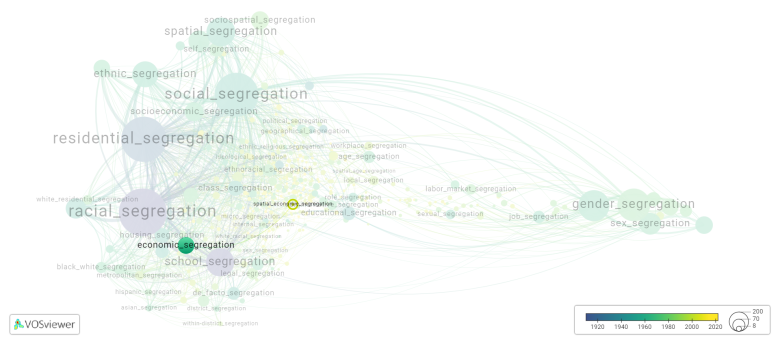Spatial economic segregation
Date and country of first publication[1]
2012
Canada
Definition
Spatial economic segregation refers to the division and separation of different socioeconomic groups within a geographic area. It occurs when people from different income levels or social classes, such as low-income versus high-income individuals, tend to live in separate neighborhoods or areas. This segregation can be based on factors like housing costs, access to amenities, and quality of public services.
Factors that contribute to spatial economic segregation include:
1. Housing prices: In many cities, housing costs vary significantly, making certain neighborhoods affordable only to wealthier individuals or families, leading to the concentration of higher-income residents in certain areas.
2. Gentrification: Gentrification is the process of renovating and improving neighborhoods, often leading to an increase in property values. This can result in the displacement of low-income residents who can no longer afford to live in the area, further segregating socioeconomic groups.
3. Zoning and land-use policies: Some cities have zoning regulations that separate residential areas from commercial or industrial areas. This can affect the availability of affordable housing and contribute to spatial economic segregation.
4. Transportation infrastructure: Limited access to efficient and affordable transportation can limit economic opportunities for low-income individuals, leading to their concentration in specific areas with lower mobility options.
5. Educational opportunities: Unequal distribution of quality schools affects the educational opportunities available to children from different socioeconomic backgrounds. This can lead to the clustering of wealthier families in neighborhoods with better schools.
Spatial economic segregation can have numerous negative impacts on society, including perpetuating income inequality, limiting social mobility, and exacerbating disparities in access to resources and opportunities. Efforts to reduce spatial economic segregation often involve policies that promote affordable housing initiatives, equitable distribution of public services, and investment in disadvantaged communities.
See also
Related segregation forms
Spatial economic segregation is frequently discussed in the literature with the following segregation forms:
Visualization based on the research
For the complete network of associated segregation forms, see:
- First year of publication https://tinyurl.com/2235lkhw
- Louvain clusters https://tinyurl.com/2d8wg5n3
- Betweenness centrality https://tinyurl.com/223udk5r
- Disciplines where segregation forms first appeared https://tinyurl.com/244d8unz
References
Notes
- ↑ Date and country of first publication as informed by the Scopus database (December 2023).
At its current state, this definition has been generated by a Large Language Model (LLM) so far without review by an independent researcher or a member of the curating team of segregation experts that keep the Segregation Wiki online. While we strive for accuracy, we cannot guarantee its reliability, completeness and timeliness. Please use this content with caution and verify information as needed. Also, feel free to improve on the definition as you see fit, including the use of references and other informational resources. We value your input in enhancing the quality and accuracy of the definitions of segregation forms collectively offered in the Segregation Wiki ©.
Spatial economic segregation appears in the following literature
Chen W.-H., Myles J., Picot G. (2012). Why Have Poorer Neighbourhoods Stagnated Economically while the Richer Have Flourished? Neighbourhood Income Inequality in Canadian Cities. Urban Studies, 49(4), 877-896. https://doi.org/10.1177/0042098011408142
Jimenez B.S. (2016). Externalities in the Fragmented Metropolis: Local Institutional Choices and the Efficiency Equity Trade Off. American Review of Public Administration, 46(3), 314-336. SAGE Publications Inc..https://doi.org/10.1177/0275074014550703

